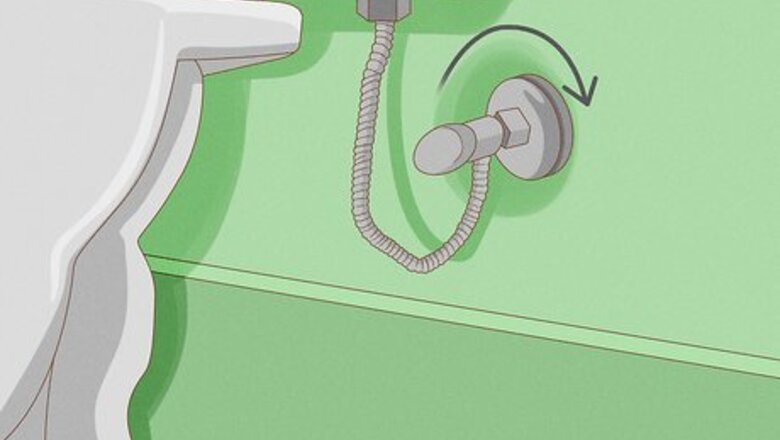
views
Draining the Toilet Tank
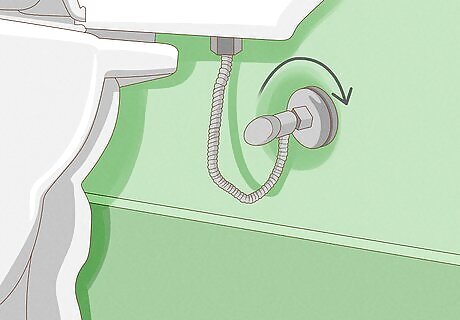
Shut off the water valve at the base of the tank. Reach down behind your toilet and find the valve that connects to the water line. Turn the valve clockwise until you can’t turn it anymore to shut the water off to your toilet temporarily. This may sound like a drastic step, but turning your water back on is a piece of cake. All you have to do is reach back down and turn the valve counterclockwise, and you’ll have a working toilet again.

Flush the toilet once to drain all the water out of the tank. It’s much easier to clean a toilet tank when it’s not full of murky water. Give your toilet a flush to drain the water out of the tank and the bowl. Since the water is turned off, the toilet tank won’t fill back up.
Cleaning with Baking Soda, Vinegar, and Dish Soap
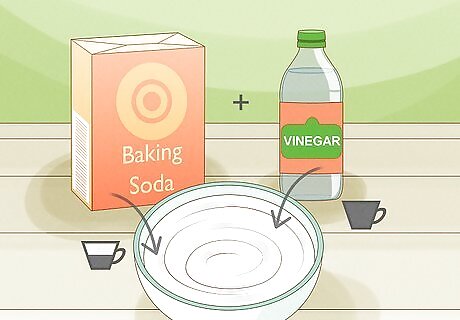
Mix 1 cup (240 mL) of vinegar with 1/2 cup (64 g) of baking soda. Don’t worry if the mixture starts to fizz up a bit—that means it’s working!
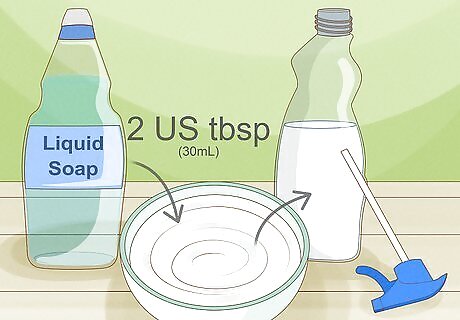
Add 2 US tbsp (30 mL) of dish soap. The soap adds an extra grease-fighting element. Stir your ingredients together until they start to lather. If you don’t want to add soap, you don’t have to. Vinegar and baking soda are great cleaners on their own! The dish soap will just help break down tough stains and mildewed spots. To combat odor, try adding 10 drops of your favorite essential oil. Tea tree oil and citrus oil are great for the bathroom, since they tackle tough smells.
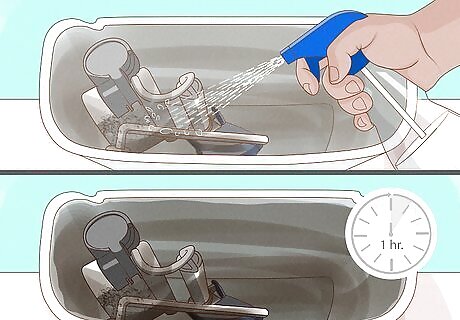
Spray your toilet tank with the cleaner, then let it sit for 1 hour. The vinegar, baking soda, and dish soap will penetrate tough stains and hard water buildup. Leave the mixture in your toilet tank for about an hour while you tackle the rest of your bathroom, then come back to it.
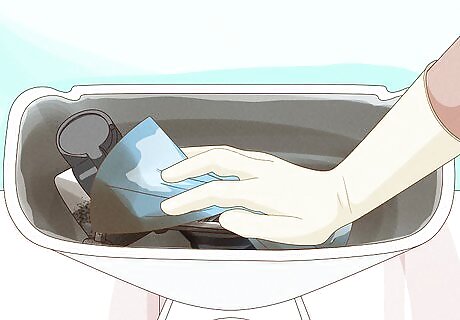
Scrub the tank with a sponge. Put on a pair of rubber gloves and wipe down the toilet tank with a sponge. Focus on any stained or mildewy spots. Do not use a metal object to scrub, it might scratch the tank.

Turn the water back on and flush the toilet. Reach down behind the toilet and turn the valve counterclockwise to pop the water back on. Then, flush the toilet to rinse out the tank and remove any leftover product.
Doing an Overnight Vinegar Soak
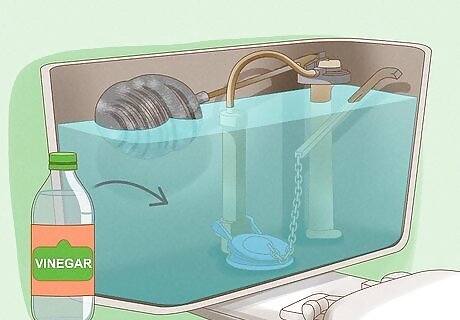
Pour enough vinegar into the tank to cover the overflow valve. You might need a lot of vinegar for this method—some tanks hold up to 3 gallons (11 L). Fortunately, white vinegar is fairly cheap, so you won’t have to break the bank. Fill up your toilet tank with vinegar, and make sure it covers the overflow valve, or the large metal mechanism that sticks up.
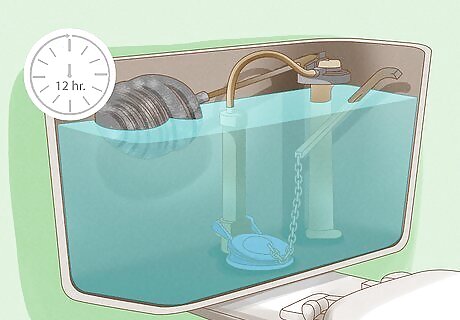
Let the vinegar sit for 12 hours without flushing. The acidity in the vinegar will break down any tough stains, making it easier for you to clean. Try to leave the vinegar in the tank for at least 12 hours to give it enough time to work. Unfortunately, this means you won’t be able to use your toilet for the time being. Make sure you and your family have somewhere else to go if you use this method.
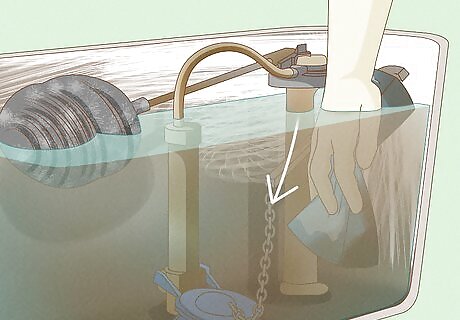
Scrub the tank with a sponge. If you notice any marks or stains on the inside of your toilet tank, use a sponge to scrub them until they’re gone. Hopefully, the vinegar will have broken them down enough that they’re easy to clean, so it shouldn’t give you much trouble.

Turn the water back on and flush the toilet. Reach down behind your toilet and turn the valve counterclockwise to get the water back on. Give your toilet a flush to remove the vinegar and rinse out the tank.
Making a DIY Baking Soda Tank Tablet
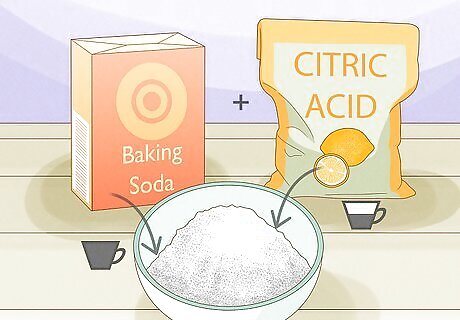
Mix 1 cup (128 g) of baking soda with ⁄2 c (120 mL) of citric acid. The acidity in citric acid will help break down tough stains, while the abrasiveness of baking soda acts as a natural scrubbing agent. Put these in a medium size bowl so you have plenty of room to mix. Citric acid is the powdered form of citrus, and you can find it at most supermarkets and grocery stores.
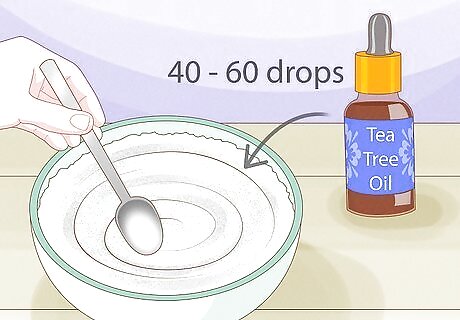
Spritz the mixture with essential oils. Combine 40 to 60 drops of essential oils (tea tree oil, lavender oil, or peppermint oil are good options) inside a spray bottle. Lightly spritz the mixture in your bowl, stirring it until it’s packable. You don’t want the mixture to be wet, but you want it to hold its shape when you press down on it.

Spoon the mixture into a muffin tin, then let it dry overnight. Use a spoon to scoop out some of the mixture and press it into a muffin tin mold. Fill your entire muffin tin, then set the mold on your counter to dry overnight.
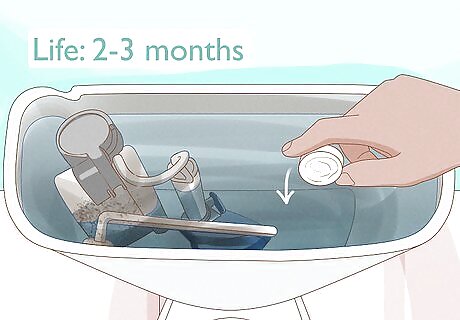
Drop a baking soda tablet into your toilet tank for a natural cleaner. One of these tablets should be enough to last about 2 to 3 months. When you first drop it in, you might hear some fizzing, but that’s okay—it means it’s working! Toilet tank tablets slowly dissolve in your toilet tank, disinfecting and cleaning the water over time. Save the rest of your toilet tank tablets in an airtight container so they don’t dry out.
Why Do You Need to Clean the Toilet Tank?
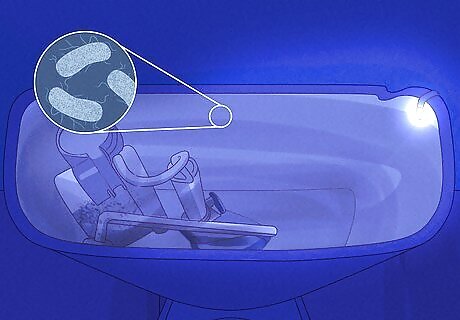
Bacteria flourishes in the dark, dank toilet tank. You probably don’t think about your toilet tank often, but it gets used every single time you flush the toilet. Bacteria, mineral deposits, and even mold can build up inside your toilet tank, so it’s important to clean it at least once or twice a year. If you’ve never cleaned your toilet tank before, that’s okay—it’s better late than never!
Are Vinegar and Baking Soda Good Cleaners?
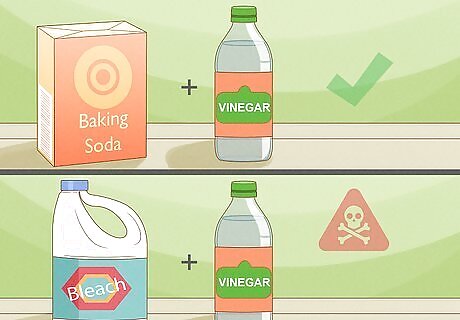
Yes, and they’re less harsh than other bathroom cleaners, too. Cleaning the toilet isn’t anyone’s favorite chore, and it’s made even worse by breathing in a lungful of chemicals. If you don’t want to deal with harsh products around you and your family, you can reach for things you might already have in your home, like vinegar and baking soda. While it might sound like a good idea at first, you should never mix vinegar with bleach. This combination creates chlorine gas, which is dangerous (and can even be deadly) to breathe in.



















Comments
0 comment